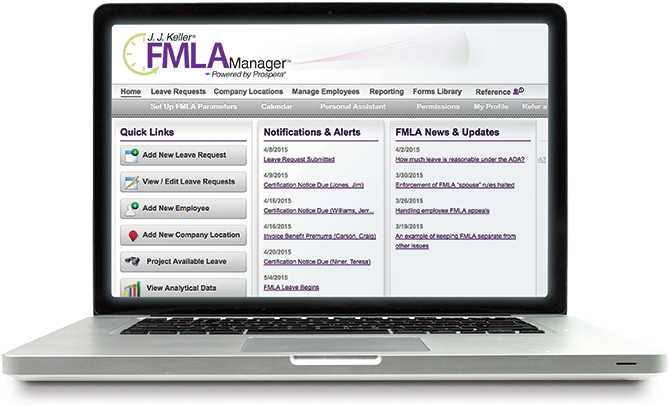FMLA Articles
DOL releases FMLA survey results
Key to remember: More employees are aware of the FMLA but are not familiar with its details.
Applies to: All public employers and private employers with 50 or more employees.
Impact to customers: Employers may find that more employees believe they are entitled to FMLA leave when they’re not.
Possible impact to JJK products/services: This is a news item at this point.
Amid the more important issues regarding employee leave, such as the Families First Coronavirus Response Act (FFCRA) and its changes, in July, the U.S. Department of Labor disclosed the results of its most recent FMLA survey. While not earth-shattering, its findings can give employers an insight into how employee view the law.
The DOL performs this survey every so many years. The last one was performed in 2012. This latest survey was performed in 2018, even though the results are being released now. It’s a pretty intensive survey.
Some of the major findings of the employee-facing part of the survey include the following:
- The portion of employees having heard of FMLA has risen since the 2012 survey, from 66 percent in 2012 to 76 percent.
- Among employees who had heard of FMLA, 27 percent believed they were eligible when their self-reported tenure, hours worked, or worksite size would not meet eligibility requirements.
- More than half (56 percent) believed that FMLA covers more situations than it does (e.g., care for a sibling or grandchild with a serious health condition generally does not qualify).
- Rates of employees having access to leave for qualifying reasons in 2018 at both worksites covered and not covered by FMLA were lower than in 2012 (99 percent and 89 percent, respectively).
- Among employees who took leave for a qualifying FMLA reason, 31 percent took intermittent leave in 2018, up from 24 percent in 2012.
- The average length of leave for a qualifying FMLA reason in 2018 was 28 business days, down from the 2012 level of 35 business days.
- Seven percent of employees reported unmet need for leave for a qualifying FMLA reason in the past 12 months, an increase from 5 percent in 2012. Low-wage employees reported needing but not taking leave for a qualifying FMLA reason more often than other employees.
For the employer-facing part of the survey, as in the past, the survey indicates that most employers covered by the FMLA report positive or neutral perceptions of the overall effect of FMLA on their productivity, profitability, and employees. Only four percent report a negative effect while 32 percent report a positive effect. Over 90 percent of employers report not difficulty in complying with FMLA requirements.
The biggest challenges employers reported include coordinating their leave and attendance policies with the FMLA (5 percent) or with local (6 percent) and state (8 percent) leave policies. Another challenge is the ongoing issue of getting the work done when an employee is on leave.
As expected, some worksites reported that it is very difficult to deal with employees’ planned short-term (11 percent) or planned intermittent leaves (13 percent). More worksites report it is very difficult to deal with employees’ unplanned intermittent leaves (25 percent) and planned long-term leaves (29 percent), though these kinds of leave are less common.
It appears that employers have had to deal with more employees expecting to have FMLA rights even when they don’t have them. Many employee handbooks of companies that are not covered by the law likely don’t have any information. Perhaps adding a brief sentence indicating that the company is not covered by the FMLA could help eliminate some issues.
This article was written by Darlene M. Clabault, SHRM-CP, PHR, CLMS, of J. J. Keller & Associates, Inc. The content of these news items, in whole or in part, MAY NOT be copied into any other uses without consulting the originator of the content.
You may also enjoy the following articles:

The J. J. Keller FMLA Manager service is your business resource for tracking employee leave and ensuring compliance with the latest Federal and State FMLA requirements.